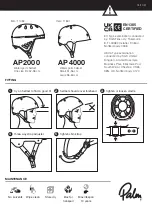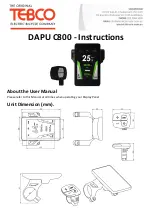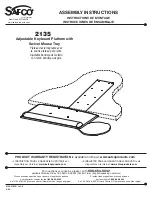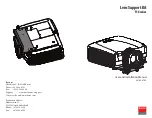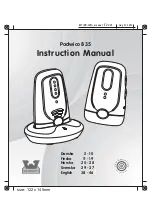
32
Knowing the terms in Eq.(2), we simply project the measurement to a
small distance from the transducer, i.e. at R ~0 in Eq.(1), yielding the
concentration term log
10
(
). With a little more arithmetic, that is ACB.
In short, the combined geometrical and water attenuation are measured
once and are fixed. [Temperature related changes in
w
are small and
applied subsequently.] The sediment attenuation is measured by the
change in the difference between two range cells. And then, the
measurement is projected to the transducer to get ACB which is then
converted to Uncalibrated Concentration.
This is a simplified explanation. The precise description of the
computations is to be published separately. Here, we simply note that
near-field effect has been considered.
Recalibration
The relationship between ACB and sediment concentration is shown in
the figure below for 5-10 micron AC dust. Note that this is a log-linear
relationship. ACB counts depend on log
10
(C). The slope of the
calibration line K
o
is fixed by electronics. The offset at 1mg/L (where
log
10
(1) =0) is called N
ref
.. For all instruments, N
ref
=1000.
A change in sediment grain-size or other properties does not change
K
o
. Only N
ref
is recalibrated, so that all sediment calibration lines are
parallel. To find the new calibration factor, we recommend using our
provided Windows software. Prepare a mixture in a well-mixed
chamber [Use of Sequoia's mixing chamber is strongly recommended].
Insert the instrument tip at the surface. Be sure to leave 15 cm gap
between sensor and chamber bottom. Press the Recalibrate button.
After completion in ~1 minutes, a new value will appear.
Содержание LISST-ABS
Страница 2: ......





















